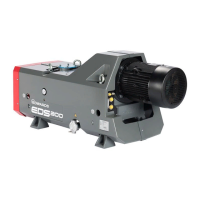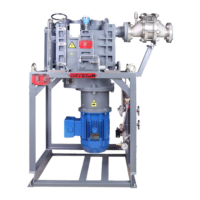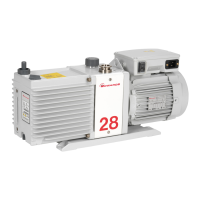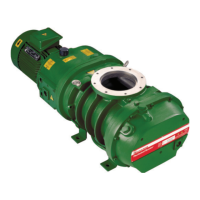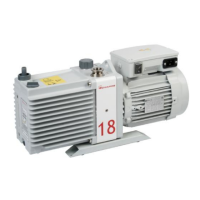▪ Use of the EDS dry pump with materials which have auto-ignion temperatures below
the dened temperature rang
▪ Operaon such that dusts and process deposits can build up inside the pump
mechanism, blow-o-valve and exhaust. This could lead to a loss of construconal
safety and an ignion hazard
▪ Operaon such that the EDS dry pump inlet temperature falls below the dew point of a
vapour being pumped. This could lead to condensate that can collect and lead to the
risk of corrosion or an ignion hazard
▪ Pumping of, or use of the EDS dry pump in the presence of, explosive dust atmospheres
▪
Use of the EDS dry pump in a system or ammable process that causes the ingress of
metallic parcles into the pump
▪
Pumping of liquids and solid parcles
▪
Pumping pyrophoric gases
▪
Use with oxygen enriched atmospheres
▪
Operaon with insucient aachment of the pump
▪
Conversion, manipulaon, and maintenance by people not authorized by Edwards
▪
Use of accessories that are not suitable for the internal or external ATEX rang, or
which are not permied or approved by Edwards
7.3 Connecng the inlet and exhaust lines
7.3.1 Inlet lines
When you connect the EDS pump to the process system:
▪ Support process pipelines to stop the transmission of stress to pipeline joints.
▪
Use exible connecon in the pipeline from the process system to the pump to reduce
vibraon and stress in the system pipelines.
▪ Ensure the loads on the pump-inlet ange do not exceed the limits specied in Exhaust
Lines.
▪ Consider to isolate the pump from the atmosphere and from your process systems if
you have pumped or produced dangerous chemicals.
▪
On very dusty applicaons, incorporate an inlet lter in the inlet pipeline, to minimise
the ingress of dust into the pump.
1. Undo and remove the bolts which secure the blanking-plate to the pump-inlet and
remove the blanking plate. Retain the bolts.
2.
Use the trapped O-ring (ed to the pump) to connect the pump-inlet to your vacuum
system. Secure the bolts retained in Step 1.
Page 25
A41802880_C - Installaon

